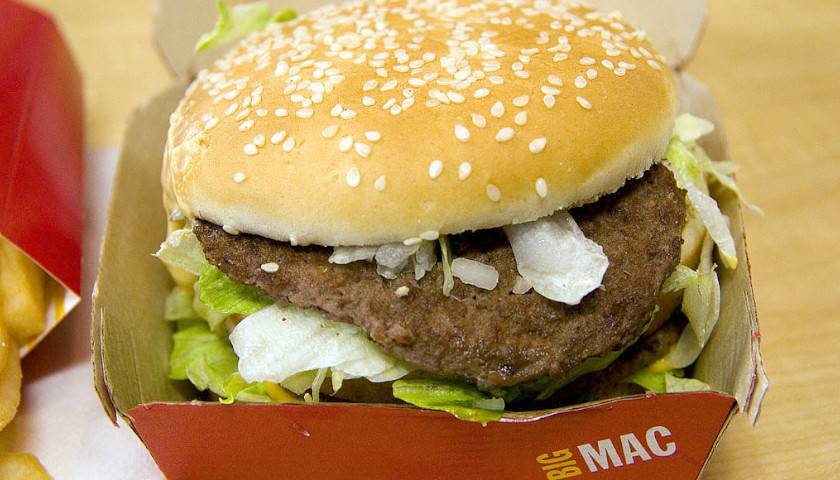by Joe Mueller
In addition to measuring foreign exchange rates, an economist is using the price of a hamburger to examine inflation.
The Economist magazine developed the Big Mac index in 1986 as an informal way to determine the “purchasing power parity” of different countries and currencies. B. Ravikumar, senior vice president and deputy director of research at the Federal Reserve Bank of St. Louis, recently used the Big Mac index to analyze the U.S. consumer price index, which is widely used as the authoritative inflation measurement.
In the blog post, “How the Big Mac Index Relates to Overall Consumer Inflation,” Ravikumar found the price of a Big Mac has been above the CPI since 2012, but didn’t increase by parallel amounts or similar levels.
“However, when inflation started to take off in 2021, the price of the Big Mac did not increase as fast as the CPI,” Ravikumar wrote.
Ravikumar plotted Big Mac and CPI inflation rates in January and July of each year since 2018. While both were at approximately 1% beginning in 2021, the CPI increased to 8.5% in July 2022 while the Big Mac was at 4.5%.
“Since then, Big Mac inflation has still been increasing, whereas CPI inflation has started to decrease,” Ravikumar wrote.
In July 2023, the Big Mac inflation was more than 8% and the CPI was above 3%.
Ravikumar noted the CPI is comprised of many diverse items, including the prices of energy and clothing.
“The change in the price of the Big Mac closely follows the change in prices associated with food away from home,” Ravikumar wrote. “Both the food away from home price index and the Big Mac index had larger increases than the CPI for all items after July 2022.”
Prices of food at restaurants and other venues are included in the CPI’s food away from home price index. While the overall CPI might be decreasing, increases in food prices are influencing the equation determining the inflation rate.
“While the two most volatile components of the CPI are food and energy, the subcomponent food away from home represents only 5.4% of the overall CPI using 2022 weights,” Ravikumar wrote. “Though Big Mac inflation does seem to track CPI inflation, its path can diverge from overall inflation because of price deviations relative to other goods and services in the U.S. consumer basket.”
The price of a Big Mac in January throughout the world showed a high of $8.17 in Switzerland, $5.69 in the U.S. and a low of $2.39 in Taiwan, according to Statista, a global data and business intelligence company. Earlier this month, a Yahoo analysis found the price of a Big Mac varied from state to state, ranging from $3.91 (Mississippi) to $5.31 (Hawaii).
– – –
Joe Mueller covers Missouri for The Center Square. After seven years of reporting for daily newspapers in Illinois and Missouri, he spent the next 30 years in public relations serving non-profit organizations and as a strategic communications consultant.
Photo “Big Mac” by pointnshoot. CC BY 2.0.






